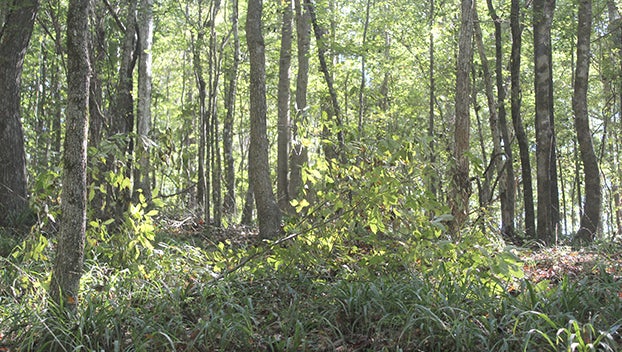MDWFP offers assistance programs to hunters, landowners
Published 5:56 pm Wednesday, October 12, 2022

- MDWFP biologists can offer tips on habitat management in order to meet a landowners or hunters needs through their private lands assistance program. (Submitted Photo)
|
Getting your Trinity Audio player ready...
|
JACKSON — Mississippi Department of Wildlife, Fisheries and Parks have a few assistance programs to help hunters and landowners to improve the habitat and wildlife. These include the Deer Management Assistance Program (DMAP), private lands program and the pond assistance program.
Mississippians are encouraged to take advantage of these programs to improve the quality of habitat and the quality of life for wildlife which go hand in hand. Deer hunting is one of the biggest components of the outdoors in Mississippi.
MDWFP offers DMAP to help landowners reach their management goals on properties. In order for a property to enroll in the DMAP program they must have at least 1,000 contiguous acres or the ability to harvest 10 does annually.
The starting point for DMAP is a meeting with the landowner or lease holder in which they set management goals for the property and deer herd. Then hunters gather data on weights, antler size, lactation dates on does and pull jaw bones to determine age of each deer harvested. After analyzing the data, a biologist will meet with the landowner or leaseholder to discuss harvest strategies to help meet the goals and maintain a healthy habitat.
DMAP had five participating properties in Panola, seven in Lafayette, one in Lincoln, four in Franklin, 16 in Adams, 22 in Jefferson, 46 in Claiborne, 13 in Wilkinson, one in Pike and six in Amite and 11 in Copiah counties according to the 2019-2020 Deer Program Report.
Statewide, 14,454 deer were harvested on DMAP properties in 2019 and the average age of bucks was 3.8 years. 54.6 percent of the does taken by hunters were in the 3.5 years and older age class.
One of the best things about the DMAP program for the biologist is it provides data to monitor the population status and age structure of the state’s deer herd. It is also helpful to DMAP participants because they are able to see a completed report of data to inform management practices.
For landowners who do not meet the requirements for the DMAP program there is a private lands program (PLP) which can help landowners regardless of their prefered species. PLP helps with property evaluations, technical guidance, cost share programs, habitat management programs and habitat management plans.
Landowners or hunters can start the PLP program by requesting a site visit from a private lands biologist. Before the visit the MDWFP recommends a person to write down clear specific goals, provide an aerial photograph of the property with accurate boundary lines, harvest data and camera survey data about animal populations, maps detailing past management and information about conservation programs and easements.
MDWFP’s Fisheries Bureau provides information on pond management, dam building permits, where to buy fish, how to combat small bass issues and technical assistance. What the MDWFP does not do through its pond assistance program is provide free fish for stocking, provide funds for pond construction or fish, perform population estimates for ponds less than an acre or test the water for pollution.






